 One of the "leaves" on the Gratitude Tree shows the students' thankfulness not only for each other, but also for their shared passion. The Oracle is the student news website this class maintains. One of the "leaves" on the Gratitude Tree shows the students' thankfulness not only for each other, but also for their shared passion. The Oracle is the student news website this class maintains. One of the most important things I've learned as a journalism teacher is the critical need for team-building. Choosing to take journalism as an elective means choosing to do a lot of work outside of class, so the students have to be fully invested in the product. Creating that investment is a multifaceted process. It starts with purpose: creating a shared sense of "this is important." But if we want our students to understand that this the important task cannot be accomplished alone, we also need to make them a team. Teams look out for each other. Teams help each other overcome obstacles and motivate each other when motivation is low. Teams get done what individuals cannot. Teampedia is a great place to start. It is a "collaborative encyclopedia of free team building activities, free icebreakers, teamwork resources, and tools for teams," and it's one of the first places I go when I'm looking to build community. When I decided recently that I wanted another way to reinforce the "news family" aspect of my journalism class, one of my colleagues suggested creating a "kudos board" where students could leave each other shout-outs. I combined this idea with Teampedia's "Thankfulness Tree" activity to create my journalism Gratitude Tree. I wasn't sure if a group of high school students would go for something like this or just write it off as cheesy, but it's been enormously popular and provided a much needed boost in morale and motivation in the final months of the school year. Although I've been using this for journalism, I can think of many ways a tree like this could build community in any setting. It could be an Idea Tree (students could add "leaves" with great ideas they've gotten from each other) in any academic class, for example. It could even be adapted for families to use at home: a Family Gratitude Tree to remind us why we are thankful for each other. We are so busy that it's easy to forget to say thanks, and this provides a forum and physical reminder of that gratefulness. As you can see from the students' messages, it's become a source of tremendous joy in my class. Not a day goes by without someone adding a post-it or two. When the tree gets too full or post-its start falling off, the students will get to keep their leaves as a tangible reminder of their importance to the class. For images of this work-in-progress, check out the gallery below.
1 Comment
I commute from one side of the city to the other every morning through Los Angeles' epic rush hour(s) traffic, so I spend a lot of time in my car. And as much as I love NPR news, there is only so much time I can spend listening to Morning Edition and All Things Considered before I am hungry for something else. A few years back I started exploring and subscribing to podcasts, and they've had an added benefit: not only do they entertain me during the long ride, they often inspire my lesson planning. Many of my favorites are also NPR radio shows, but the podcast format has allowed me to broaden my options outside rush hour. The podcast Serial made news this past year when it became the most popular podcast in the U.S., Canada, the U.K, and Australia. This narrative-style investigation of a 15-year old murder case became a "global phenomenon," and some English teachers abandoned their plans and instead had their students listen to the podcast during class and discuss it. KQUD's Mindset recently published an article about the ways teachers are using podcasts in the classroom: "A growing number of educators who are using podcasts like 'Serial' to motivate their classrooms and address education requirements set by the Common Core state standards. Improving students’ listening skills is one of the essential components of the new education mandates, and using audio in the classroom can be an effective way to promote listening." Aside from teaching listening skills, however, my podcast obsession seems to work best to supplement my existing curriculum and broaden our classroom discussions. For example, Radiolab did a fascinating (and somewhat terrifying) episode called "Memory and Forgetting" last year. As I listened to how easily human memory can be manipulated, it hit me: how great would it be to listen to part of this hour with my AP Lit class when we read Orwell's 1984? Or what about using one of the excerpted TED talks featured on the TED Radio Hour in the episode called "Memory Games"? When teaching about the socially constructed nature of race in my American Literature class, the episode "Pike County, OH: As Black as We Wish to Be" on State of the Re:Union became the catalyst for one of the best discussions we had all year. It came up again and again as we read Toni Morrison and Mark Twain. Or to talk about podcasts as an alternative form of journalism in my 21st Century Journalist class, why not listen to the 99% Invisible episode "Under the Moonlight" about how a serial killer in Austin and fears about the dark led to the creation of "moonlight towers"? 99% Invisible is a show about design, so I could also see arts and engineering teachers finding myriad ways to integrate it in their classroom. Trying to help graphic design students understand the power of a symbol? Listen to "Designing a Nuclear Waste Warning Symbol That Will Still Make Sense in 10,000 Years." For that matter, why not use this episode to talk about literary symbolism? My student newspaper Lifestyle editor might benefit from listening to the entertainment roundtable Pop Culture Happy Hour, one of my favorite shows. Could we work this type of a program into our Arts & Entertainment section? I rarely go more than a day without thinking, "I could use that!" Here are some of the podcasts (aside from Serial, which is on hiatus) currently inspiring me. Some of these also broadcast on public radio, but I listen to them all via the podcast app on my phone. What are your favorites? I'd love to hear about them in the comments.  I mentioned in an earlier post how much I love TED talks, and the TED Radio Hour is where I find most of them. Each episode includes approximately five talks around a common theme or topic. The host Guy Raz weaves excerpts from the original talks together with interviews from the speaker. No matter what you teach, this show will have a lot of options for you to explore.  Radiolab mixes science with storytelling and creates magic. This is the show I used to explore memory manipulation in Orwell's 1984, and I get ideas for other literary connections all the time when I listen. If you teach journalism, you must listen to the hilarious podcast extra from "Happy Birthday, Bobby K" in which co-host Robert Krulwich tells an epic tale of chasing the ultimate story involving alligators and a marching band.  State of the Re:Union is a fantastic show for American literature, history and geography. Its slogan is "Telling the story of America, one community at a time," and its homepage features an interactive map of the country. You can click on any state to see stories from that area.  99% Invisible calls itself "a tiny show about design," but because it explores such an eclectic range of topics, it connects to my class in unexpected ways. An obvious must for any design or architecture teacher, but I'd argue you could find a way to connect some of the episodes to almost any subject.  StoryCorps features real stories told by real people. From their site: "Since 2003, StoryCorps has collected and archived more than 50,000 interviews with over 90,000 participants. Each conversation...is preserved at the American Folklife Center at the Library of Congress. StoryCorps is one of the largest oral history projects of its kind." I love it also because you can search the site by theme. About to teach Romeo and Juliet? Have students listen to a few stories about love. Reading How the Garcia Girls Lost Their Accents? Take a listen to real immigration stories. It's a great resource.  This American Life is in many ways the radio show that started it all. According to its website, it's often the most popular podcast in the country, and for good reason. With fascinating themes, deep investigation, and twenty years of storytelling experience, it's endlessly inspiring. I believe the the recent episode "Three Miles" should be mandatory listening for every teacher--heck, every person--in the country.  Code Switch bills itself as "a team of journalists fascinated by the overlapping themes of race, ethnicity and culture, how they play out in our lives and communities, and how all of this is shifting." I'm cheating a little here since it's primarily a blog, but it's too good to leave off.  Snap Judgment's slogan is "storytelling with a beat," and it's one of my favorite shows. Each episode has a theme and a mix of fictional and non-fictional stories around that theme. Since every segment is distinct and not too long, it can be a great place to go when I'm looking for a quick story to connect thematically to a book we're reading. As with any of these podcasts, not all stories are appropriate for all grades, but when I find one that works, the students love the way Glynn Washington and his team mix words, sounds and music together.  I probably wouldn't use Pop Culture Happy Hour directly in my classroom (except, perhaps, to inspire my entertainment journalists), but I love it as a way to stay in touch with popular culture--important for a teacher, I think. I also completely adore Linda Holmes and her team. They have a great chemistry and never fail to make me laugh on my way to work Friday morning. I always tell my students not to wait until the last day of vacation to start their work. And I always promise myself that this year I will not wait until the last day of vacation to start my own work.
It’s the last day of Spring Break, and I haven’t started my work. Why do I do this to myself? What is it about vacation brain that convinces otherwise reasonable people that the work will somehow disappear if we ignore it? I know some of it is a desire to have a real break during vacation. That’s the point of a break, right? To not work? But I also know that is silly. School work has never stayed neatly within the bounds of the school day, and one of the reasons breaks like this are so important to me as a teacher is the opportunity to get caught up. But if “getting caught up” requires an eight-hour grading binge on the last day before that pre-dawn alarm clock, I am definitely doing something wrong. I haven’t been a total slacker. I am in the midst of an online graduate program in pursuit of a second Master’s degree, so I did a lot of work for that class. I visited family in Tucson, began a massive closet purge, continued to train for my next half marathon, and participated in that perennial teacher tradition: going to all of the daytime appointments I can’t usually do during a normal school week. ALL the doctors’ appointments and hair cuts! Still. It’s 3 p.m. on Sunday, and my grading bag is giving me the stinkeye. I should probably get on that. At least I know my students are in the same boat. The above picture was taken April 2004 in the new Globe Theatre, London. I’m the one grinning in the front row, not so much older than my students. I was leading those 27 Connecticut public school students and five other adults on a Shakespeare-centric tour of England, and I was having the time of my life.
Leading a trip to another country is not for the faint of heart, even if you engage the services of an educational tour company, which I did. Most of the students in this picture had never left the country before, and over the course of our 10-day trip, I dealt with homesickness, actual sickness, and culture shock. One student cried herself to sleep the first three nights. Another threw up in the middle of a bus trip...and no one on the bus had paper towels. (The English tour guide looked politely off into the distance as I dashed among students and gathered extra napkins from their bag lunches.) We were traveling before the era of the smartphone, so keeping track of where all 27 teenagers were was not an easy task. But man, was it worth it. I had never taken students on an extended trip before this U.K. adventure, but I knew after this experience that I would be doing this many more times before the end of my career. Spending time with these students outside of the classroom was so rewarding. As they wandered through Shakespeare’s birthplace, explored Anne Hathaway’s cottage, and figured out the color-coded map for the London Tube, I watched the world open to them. History and literature came off the page and became real. Studying Shakespeare is one thing; watching the Royal Shakespeare Company perform Macbeth in Stratford-upon-Avon is quite another. The trip also created a bond between us that we never could have experienced in the classroom. We laughed together and struggled together and bemoaned the exchange rate together. Although all of the students in this picture have long since graduated (some have kids in school themselves now!), I still feel close to them. When we got back to the U.S., they presented me with a binder full of notes and cards and pictures from the trip documenting their experiences as a thank you for making it happen. It remains one of my most treasured possessions. I haven’t led another trip outside of the country since this one, but I’ve had the opportunity to take students on other adventures. I’ve been part of numerous camping, rafting, canoeing and kayaking trips as well as leading trips to Washington D.C. and San Diego for journalism conferences. Sometimes I’ve been the leader; other times I’ve just been along for the ride. But I’ve always been glad I went. Despite the challenges of travel and the amount of time it takes to prepare for a major trip, I recommend it to every teacher. It may take major fundraising or creative financing to make it possible, and it may be more practical to go on a camping trip nearby than on a tour of another country. You need to know your kids and make good choices about who you take--both students and chaperones--on those adventures. But if it’s possible, do it. You’ll learn as much as they do, and you’ll come home with so many stories. Better yet, so will they. Here are some pictures taken during my travel with students over the past 11 years. I’ve selected images to try to convey the joys of this kind of travel (silliness and wonder and everything in between). I haven’t named any of the students to protect their privacy, but I hope some of them stumble across these images and smile. I’m a huge fan of TED talks. If you aren’t familiar with this organization, here is their mission statement: TED is a nonprofit devoted to spreading ideas, usually in the form of short, powerful talks (18 minutes or less). TED began in 1984 as a conference where Technology, Entertainment and Design converged, and today covers almost all topics — from science to business to global issues — in more than 100 languages. Meanwhile, independently run TEDx events help share ideas in communities around the world. I love TED because we can access these ideas wherever we are and whenever we have time. Here are three talks I think everyone--but especially educators and parents--should watch. Angela Lee Duckworth: The key to success? GritAngela Duckworth has her own lab at the University of Pennsylvania dedicated to "two traits that predict achievement: grit and self-control.” This talk summarizes key findings from the 2007 study she co-authored: "Grit: Perseverance and passion for long-term goals.” Many people assume that IQ will predict achievement. What the research found, however, is a far more crucial factor: grit. How resilient we are. How well we can bounce back from failure. Duckworth’s research solidified for me the importance of letting students struggle. Well-intentioned parents are doing their kids no favors when they try to “smooth the way” for them. It’s a great talk. Side note: If you’re curious about your own “grittiness,” why not take this quiz to see how you do? Or maybe have students take it in a class before a discussion? Carol Dweck: The power of believing that you can improveI believe Carol Dweck is one of the most important researchers in the country. When I first read about her research about growth vs. fixed mindset, it profoundly shifted my understanding of intelligence and ability. More importantly, it had a tangible and concrete impact on the way I praise my students. This TED talk is a mere overview (parents, I urge you all to read “How Not to Talk to Your Kids” in tandem with this talk), but it’s a great place to start the conversation. Chimamanda Ngozi Adichie: The danger of a single storyChimamanda Adichie is a gifted Nigerian writer who has won many awards for her novels and short fiction. Her recent novel Americanah won the 2013 National Book Critics Circle Award for Fiction. What I love about this talk, however, is how it speaks to the importance of a rich and diverse literary curriculum. Adichie explores the dangers of a “single story” about any culture. She uses her own experiences as a college student in the U.S. as one example of this: "My American roommate was shocked by me. She asked where I had learned to speak English so well, and was confused when I said that Nigeria happened to have English as its official language. She asked if she could listen to what she called my "tribal music," and was consequently very disappointed when I produced my tape of Mariah Carey.... My roommate had a single story of Africa: a single story of catastrophe. In this single story, there was no possibility of Africans being similar to her in any way, no possibility of feelings more complex than pity, no possibility of a connection as human equals." We all have single stories due to a lack of exposure to other cultures, she argues, and she uses a trip to Mexico to show how she, too, fell prey to this trap. It’s a beautiful, powerful, and funny talk. |
About“And though she be but little, she is fierce!” -A Midsummer Night’s Dream Archives
December 2020
Categories
All
|










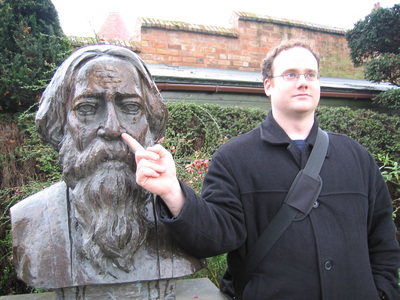






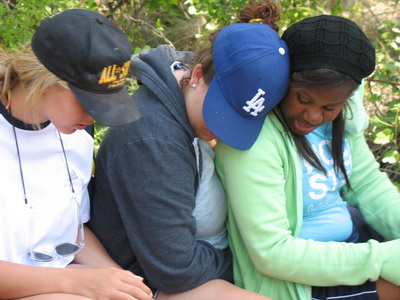

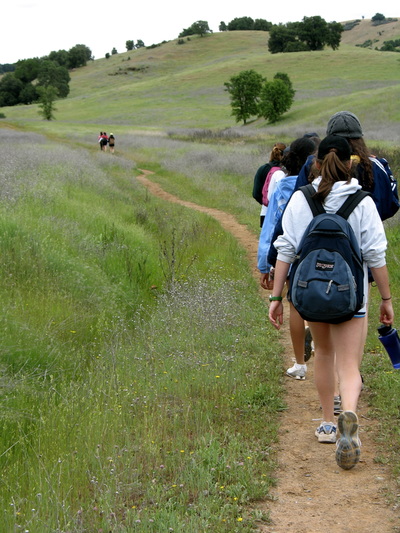







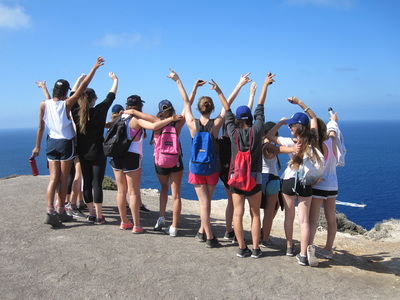
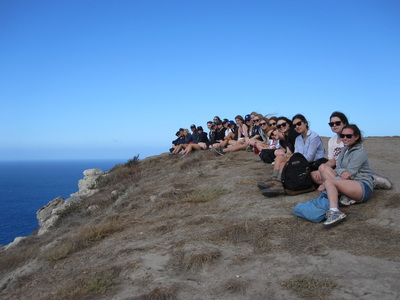
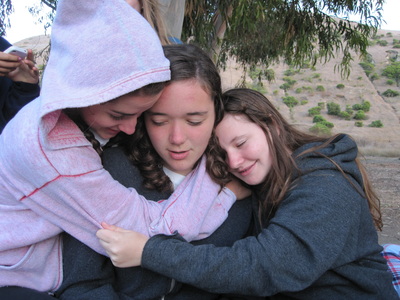
















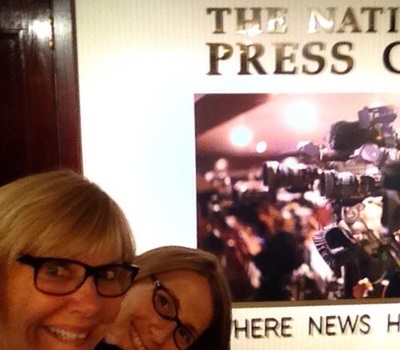





 RSS Feed
RSS Feed